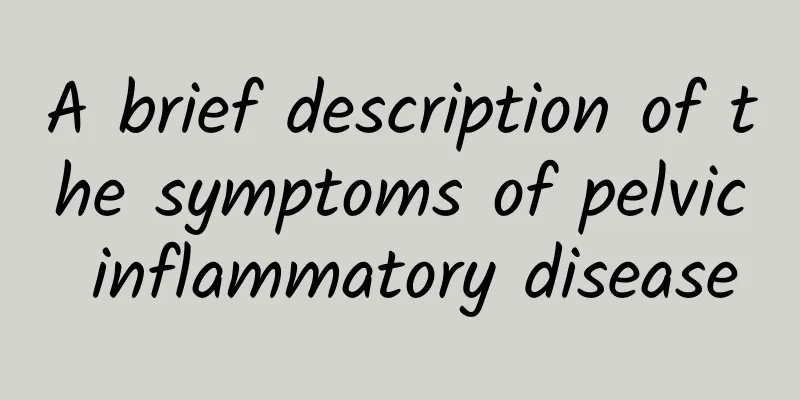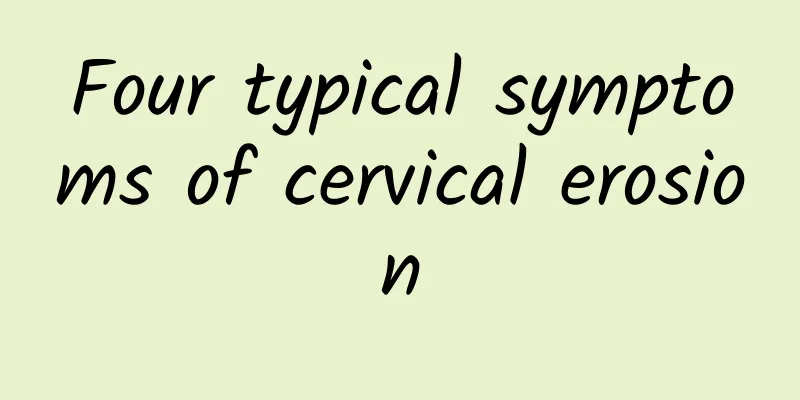What are the dangers of abortion for women? How can women nourish themselves after abortion?

|
In modern society, people are becoming more and more open-minded, and there are more and more unmarried men and women living together, which leads to an increase in the number of women who have unexpected pregnancies. Unexpected pregnancies bring a lot of inconveniences to life and work, so many people choose to have an abortion. Although an abortion is a minor operation, it has a great impact on women's health. So, what are the hazards of having an abortion for women? How to maintain health after an abortion? What are the dangers of having an abortion for women? 1. Endometriosis Repeated suction of uterine cavity contents may cause adhesion of the uterine cavity and cervical canal, and may also cause intrauterine blood accumulation or menstrual blood to flow back into the abdominal cavity, causing endometriosis and cyclical lower abdominal pain. 2. Long-term complications Such as chronic pelvic inflammatory disease, abnormal menstruation, secondary infertility, and endometriosis. 3. Uterine perforation, life-threatening During pregnancy, the uterine wall becomes soft and thin. Multiple pregnancies and multiple abortions can easily pierce the soft and thin uterine wall, causing uterine perforation and endangering life. 4. Complications during subsequent pregnancy Infertility, high rates of late miscarriage, high rates of premature birth, high perinatal mortality, increased rates of antepartum and postpartum bleeding, and increased neonatal hemolytic disease. 5. Amenorrhea Continuous abortions will damage the basal layer of the endometrium repeatedly, causing the functional layer to be unable to grow again. At this time, although the ovaries are fully functional and ovulate on time every month, the functional layer of the endometrium cannot regenerate after shedding, so menstruation will not occur, resulting in amenorrhea. 6. Dystocia and retained placenta during subsequent pregnancy Repeated abortions often require scraping of the endometrium. The more times the scraping is done, the more damage the endometrium suffers. When you want to get pregnant again, placenta implantation and adhesion are more likely to occur, resulting in dystocia and retained placenta. 7. Recent complications Incomplete artificial abortion, vaginal bleeding lasting more than 15 days after surgery; endometritis, adnexitis, pelvic inflammatory disease, etc. due to infection with pathogenic bacteria within 2 weeks after surgery; intrauterine blood accumulation; intrauterine adhesions, postoperative amenorrhea or significantly reduced menstrual volume, sometimes accompanied by periodic lower abdominal pain or uterine enlargement and blood accumulation. How do women replenish their body after abortion? 1. Pay attention to dietary supplements Because abortion causes certain damage to the body, not only does it cause a certain amount of blood loss, but the psychological pressure and physical pain during the abortion process also make the body weaker after the abortion, and some people may even have anemia. It is absolutely necessary to take proper nourishment, and the degree and duration of nourishment should be considered comprehensively according to the physical condition of the aborted person and the amount of blood loss. It is appropriate not to have too much nutrition, nor to have too little nutrition. First of all, we must ensure the supply of high-quality protein, adequate vitamins and inorganic salts, especially sufficient iron to prevent the occurrence of anemia. Food selection should be nutritious and easy to digest and absorb. Fresh fish, tender chicken, eggs, animal liver, animal blood, lean meat, soy products, milk, jujube, lotus seeds, fresh fruits and vegetables can be provided. 2. Pay attention to dietary taboos Do not eat or eat less greasy, raw and cold food. Do not eat radish, hawthorn, bitter gourd, orange and other foods that have a cooling effect on the qi and blood circulation. Eat more easily digestible food. The time for nourishing is preferably half a month. For those who are weak, have poor physical condition, or have lost a lot of blood, the time for nourishing can be appropriately extended. 3. Health regimen (1) Egg and Date Soup Ingredients: 2 eggs, 10 red dates, and appropriate amount of brown sugar. Method: Put water in a pot and bring it to a boil, then add the eggs and cook them. When the water boils again, add the red dates and brown sugar and simmer for 20 minutes. Efficacy: It has the effect of replenishing qi and nourishing blood. It is suitable for the conditioning of anemia and insufficient qi and blood after illness and childbirth. (2) Lychee and jujube soup Ingredients: 7 dried lychees and 7 dried dates. Method: Add all the ingredients into water and boil it, take 1 dose per day. Efficacy: It has the effect of nourishing blood and promoting body fluid, and is suitable for women with anemia and physical weakness after miscarriage. |
Recommend
Can I get pregnant if I have ovulation bleeding?
When it comes to ovulation bleeding, everyone may...
What are the diagnostic tests for uterine fibroids?
Uterine fibroids are a common gynecological disea...
Chef Oliver eats kelp to lose weight! Alginate increases satiety
In addition to cooking delicious food, the famous...
Are there any symptoms of congenital absence of vagina?
There are many clinical symptoms of congenital ab...
How to diagnose cervical erosion in women? These examinations are essential for patients with cervical erosion
Cervical erosion is a very serious disease for wo...
The symptoms of pelvic inflammatory disease and cervicitis are more serious than those of
According to clinical experience and medical rese...
Women should love themselves: the harm of abortion
In recent years, the topic of abortion has gradua...
What fruits can I eat after abortion surgery? What is the best thing to eat on the day of abortion surgery?
After an abortion, you need to pay special attent...
Vulvar leukoplakia care is very important
Vulvar leukoplakia is a very harmful disease, so ...
A brief introduction to the common sense of female pelvic inflammatory disease care
It is very common for women to suffer from pelvic...
Do I need to supplement vitamins after an abortion? How do I regulate my body if I am weak after an abortion?
Many women who have an unexpected pregnancy will ...
Women should pay attention to some common care methods for ectopic pregnancy
Nowadays, many pregnant women may have ectopic pr...
What are the diagnostic tests for vaginitis?
Treatment of vaginitis starts with examination an...
Precautions for patients with functional uterine bleeding after curettage and hemostasis
For patients with functional uterine bleeding, wh...
What causes ectopic pregnancy in women?
Don't think that ectopic pregnancy is far awa...









